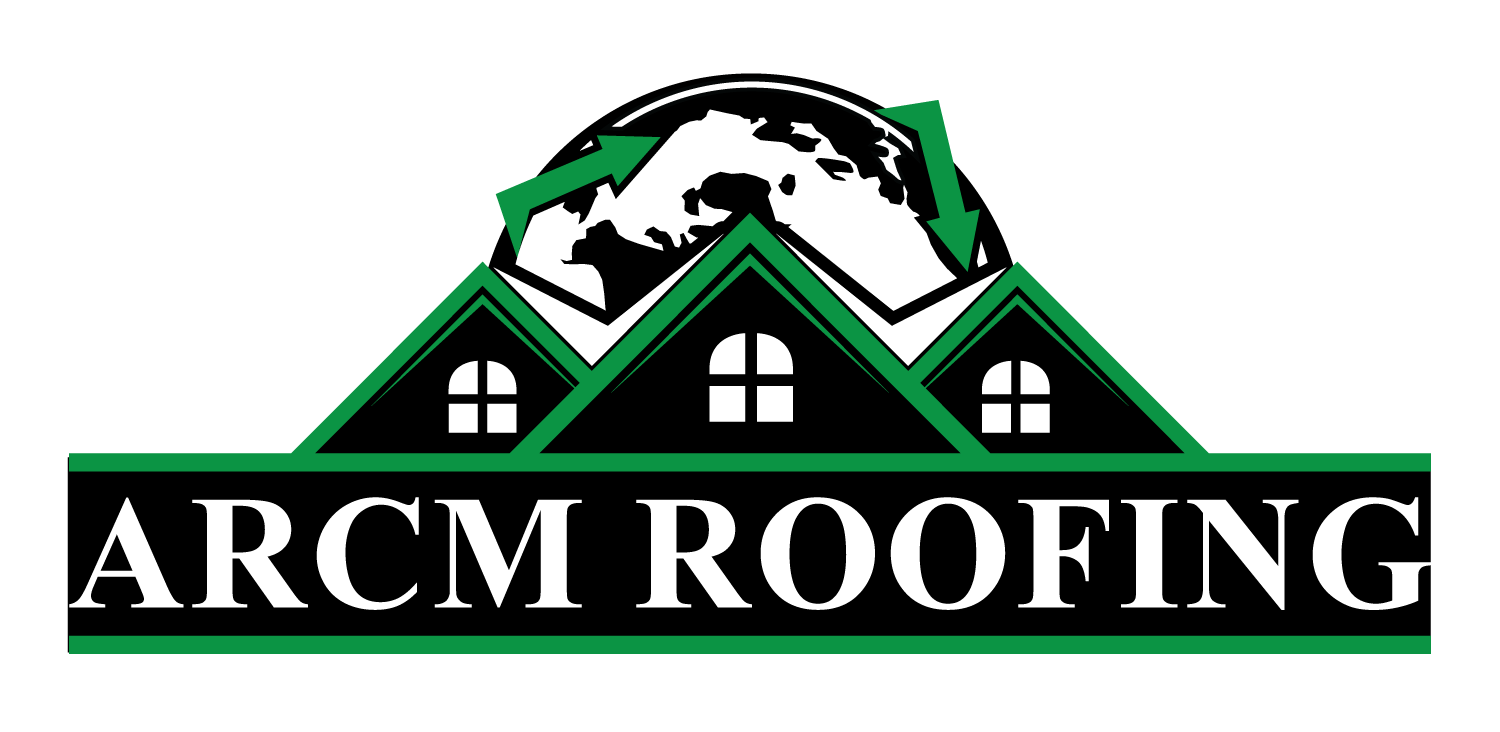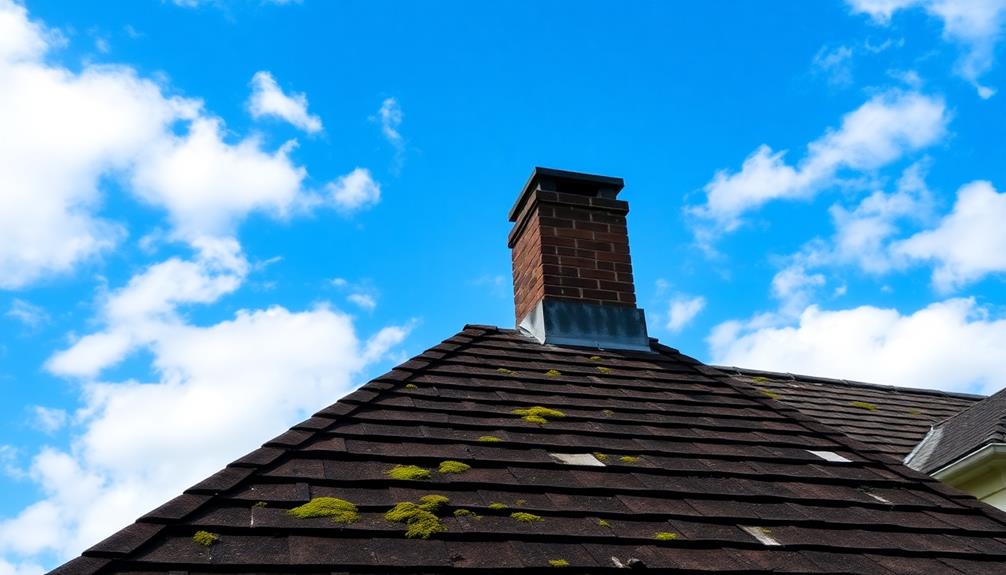Residential roof inspections are pivotal in safeguarding your home’s structural integrity by identifying damages before they escalate into costly repairs. These inspections meticulously address issues like missing shingles, water stains, and moss growth, guaranteeing the roof’s longevity and enhancing home safety. Tailored services in Colorado leverage advanced techniques such as drone inspections and infrared scanning to evaluate material integrity, adapting to unique weather and architectural challenges. Regular inspections not only preserve your property’s aesthetic appeal but also reveal potential improvements in energy efficiency. By engaging with professionals, you can ascertain your home remains a robust, safe, and efficient sanctuary.
Roofing Highlights
- Residential roof inspections help in identifying potential damage, ensuring structural integrity and safety.
- Evaluating roof conditions early can prevent costly repairs and extend the roof’s lifespan.
- Routine inspections enhance energy efficiency by identifying insulation issues, reducing utility bills.
- Tailored inspections address various roofing materials and consider specific climatic challenges.
- Technological advancements like drones and infrared scanning improve inspection accuracy and thoroughness.
Roof Inspection Purpose

The primary purpose of a roof inspection is to accurately assess the current condition of the roof, identifying any potential damage that could compromise its structural integrity and function. Engaging with experienced inspectors guarantees that the evaluation is thorough and reliable.
Identifying Potential Roof Damage
Understanding the purpose of a roof inspection is paramount in identifying potential damage early and effectively. Early detection is indispensable in addressing issues before they escalate into costly repairs or replacements. During a roof inspection, the inspector seeks to unravel subtle signs of wear and tear that might elude the untrained eye but could eventually compromise the integrity of the entire structure. This careful scrutiny is vital in safeguarding both the physical safety and investment of homeowners, fostering a sense of security and belonging within the community.
Potential roof damage manifests in a myriad of forms, each requiring keen observation and expertise to identify and address appropriately.
- Missing Shingles: Shingles displaced by wind or weather expose the underlying structure to water infiltration, leading to structural decay.
- Water Stains and Leaks: Indicative of existing damage, leaks or stains often point to breaches in the roofing membrane, necessitating immediate attention to avert further deterioration.
- Moss or Algae Growth: These organic materials hold moisture against the roof material, hastening the breakdown of shingles and fostering a breeding ground for fungi.
Diligent identification of these elements fortifies residential resilience against potential damage, ensuring a secure and enduring shelter.
Ensuring Roof Longevity
A roof acts as the umbrella of any home, safeguarding it from the elements while playing an essential role in its longevity. Regular inspections are critical in ensuring that this first line of defense remains robust and functional over time.
Conducting complete inspections allows property owners to uncover early signs of wear or damage, such as loose shingles, deteriorating flashing, or accumulating debris, which can greatly shorten a roof’s lifespan if left unaddressed. Timely identification and remediation of these issues contribute to preserving the structural integrity and aesthetic appeal of the roof.
Investing in regular roof inspections not only fosters proactive maintenance but also reinforces a sense of community ownership and pride, as well-maintained properties enhance neighborhood value and curb appeal. By scheduling periodic inspections, homeowners can extend the service life of the roof, optimizing their investment and reducing long-term repair costs.
Additionally, inspections often reveal opportunities for energy efficiency improvements, such as better insulation or ventilation enhancements, therefore contributing to overall household sustainability. In other words, strategic roof inspections serve as an invaluable tool for safeguarding the durability and dependability of one’s home environment, promoting lasting comfort and security for families and the broader community.
Enhancing Home Safety
Prioritizing home safety through regular roof inspections is essential in preventing potential hazards. A robust inspection process is more than a routine check; it is a strategic initiative to safeguard your home’s structural integrity and protect its occupants. Regular roof inspections can proactively address issues that may otherwise go unnoticed until they cause considerable damage, ensuring that your living environment remains secure and sound.
Engaging in periodic roof evaluations provides a threefold benefit:
- Early Detection of Damage: Identifying problems like leaks, missing shingles, and structural vulnerabilities early can greatly impede worsening conditions, conserving time and resources.
- Prolonged Roof Lifespan: Scheduled inspections contribute to a roof’s durability by promptly addressing minor issues before they escalate, hence averting premature roof replacement and fostering a sense of security in your home.
- Enhanced Safety Measures: Evaluating the roof for weaknesses that could pose risks during severe weather conditions helps maintain the safety of all household members by preventing accidents and structural collapses.
These advantages underline the significance of integrating roof inspections into routine home maintenance, evoking a shared commitment among homeowners to uphold a safe and harmonious living environment, while fostering a collective dedication to community well-being.
Benefits

Engaging in regular residential roof inspections provides a multitude of benefits, chiefly among them the early detection of potential damage, which can vastly extend the lifespan of your roofing system. Having a team of certified and experienced roofers, like those at ARCM Roofing, guarantees thorough inspections and high-quality services.
Early Damage Detection
Spotting early damage on residential roofs is imperative for homeowners seeking to maintain the longevity and efficiency of their property. By identifying issues in their nascent stages, homeowners can prevent minor problems from escalating into costly repairs. Early damage detection offers significant benefits that contribute to the well-being of both the property and its residents.
- Cost Savings: Addressing small issues promptly, such as minor leaks or cracked shingles, can prevent more extensive damage that would require costly overhauls or replacements. For instance, a minor leak identified early can be corrected with minimal cost compared to a full roof replacement due to prolonged water infiltration.
- Enhanced Property Value: Homes with well-maintained roofs are more attractive to potential buyers. Early detection and repair of roof damage maintain the structural integrity and aesthetic appeal of the property, thereby preserving or even enhancing its market value.
- Safety Assurance: Timely identification of damage such as loose shingles or compromised structural elements can mitigate the risk of accidents or injuries. Keeping the roof in good condition also helps in preventing potential health issues arising from mold or mildew growth due to unnoticed leaks.
Incorporating routine inspections keeps your roof in optimal condition, fostering a safe and comfortable living environment.
Extend Roof Lifespan
Maintaining the integrity of your roof through early damage detection not only mitigates immediate risks but also contributes to extending its overall lifespan. A well-maintained roof acts as a robust shield against the elements, ensuring the safety of your home while also adding to its aesthetic and functional longevity.
Regular inspections uncover issues that, if left unresolved, could accelerate deterioration, consequently allowing for timely interventions that prevent further damage. By addressing small vulnerabilities before they evolve into significant problems, the longevity of roofing materials is substantially enhanced.
Moreover, the practices involved in roof maintenance often integrate environmentally considerate treatments and coatings, which shield surfaces from harsh weather extremes, further prolonging durability. The increased lifespan results not only in cost savings associated with fewer replacements but also in a home that resonates with a deep-seated sense of security and investment value.
In turn, this fosters a collective ethos of stewardship and care within communities devoted to maintaining their residences’ pristine conditions. Leveraging expert knowledge and techniques in roof preservation, homeowners gain more than just a shelter; they partake in a tradition of thoughtful custodianship, enhancing their belonging in a community that values preventive care.
Prevent Costly Repairs
One of the predominant advantages of regular roof inspections is the prevention of costly repairs. By identifying potential issues before they escalate into major problems, homeowners can safeguard their investments and maintain the integrity of their homes.
Consider the following benefits:
- Early Detection of Damage: With routine inspections, small issues such as missing shingles or minor leaks are promptly discovered, allowing for immediate corrective action. This proactive approach prevents these minor issues from developing into significant structural damage that can require expensive repairs or even complete roof replacement.
- Protection Against Weather Elements: Regular roof inspections guarantee that your roof remains resilient against harsh weather. A well-maintained roof provides indispensable protection against elements such as rain, wind, and snow, preventing moisture intrusion and insulation degradation that can lead to costly interior damage.
- Cost Efficiency: While some might consider regular inspections an additional expense, they actually save money in the long run by minimizing emergency repair costs. For those who value belonging and take pride in homeownership, well-timed inspections contribute to peace of mind by guaranteeing that valuable assets are preserved and protected against unforeseen expenses.
Through these advantages, homeowners not only preserve the value of their property but also state their commitment to effective home maintenance.
Improve Energy Efficiency
A frequently overlooked benefit of regular roof inspections is the enhancement of energy efficiency. In communities where energy costs are escalating concerns, ensuring our homes operate efficiently strengthens not only budgets but also environmental responsibility. Roof inspections play an integral role in identifying and rectifying inefficiencies that contribute to higher energy consumption. By carefully examining roofing materials and insulation, professionals can pinpoint areas where air may be leaking, allowing unwanted heat transfer that increases heating or cooling needs.
When these inefficiencies are addressed, the home benefits from improved insulation, directly reducing the strain on heating, ventilation, and air conditioning (HVAC) systems. This not only results in lower utility bills but also extends the life of these critical systems, solidifying the sense of security and belonging to a community that prioritizes sustainability. Additionally, an energy-efficient home adds to the personal satisfaction of contributing to broader environmental goals, adding value to the residence.
Regular roof inspections foster a proactive approach, promoting an understanding of how our living spaces can better integrate with natural resources. Such measures underscore a commitment to efficient living, a quality that galvanizes community pride and connectivity.
Types of Roofing Materials

Understanding the diverse array of roofing materials available is essential for homeowners seeking to balance aesthetic appeal, durability, and environmental considerations. Common choices such as asphalt shingles, metal, and tile each offer distinct advantages and trade-offs, as illustrated below:
| Material | Key Characteristics |
|---|---|
| Asphalt Shingles | Cost-effective, moderate lifespan |
| Metal | Highly durable, energy-efficient |
| Tile | Long-lasting, heavy, eco-friendly |
Evaluating these materials with regards to their comparative durability and impact on the environment can guide informed decision-making in residential roof inspections.
Common Roofing Material Choices
Selecting the right roofing material is critical for ensuring durability, energy efficiency, and aesthetic appeal in any residential construction. Homeowners today are presented with a diverse array of options, each offering distinct advantages that cater to specific needs and preferences, fostering a sense of belonging through tailored choices.
As you evaluate these options, consider the following common materials:
- Asphalt Shingles: Renowned for their cost-effectiveness and versatility, asphalt shingles remain a popular choice due to their easy installation and variety of colors. Their compatibility with different architectural styles makes them a favored option for suburban communities seeking to maintain a cohesive aesthetic.
- Metal Roofing: Often appreciated for its longevity and modern appearance, metal roofing is a robust option that offers excellent resilience against harsh weather conditions. Its reflective properties contribute to cooler indoor temperatures, potentially reducing energy bills—a notable benefit for eco-conscious homeowners.
- Clay and Concrete Tiles: Recognized for their distinct Mediterranean flair, clay and concrete tiles excel in hot climates by promoting effective heat dissipation. Their durability over time adds a layer of security that many generations have relied upon, ensuring the continuance of a home’s legacy.
These materials offer unique benefits, enabling informed decisions that balance practicality with personal taste.
Comparative Durability Factors
When evaluating roofing materials, the durability of each option greatly impacts the long-term value and maintenance demands of a home. Homeowners, seeking peace of mind and financial prudence, are particularly attentive to how well various materials withstand the elements. Asphalt shingles, being the most popular choice, offer a respectable lifespan of 15 to 30 years, depending on quality and installation. Their cost-effectiveness and ease of replacement bring a measure of reliability.
In contrast, metal roofing, often comprised of aluminum, steel, or copper, extends longevity considerably, lasting anywhere from 40 to 70 years. Its resistance to corrosion and weathering makes it appealing for those wishing to secure their homes against harsh climates.
Similarly, wood shake shingles provide a rustic appearance and perform well in moderate weather for about 30 to 40 years, though they demand consistent maintenance to achieve such tenure.
Tile and slate roofs offer unparalleled durability, enduring for 50 to 100 years or more. Crafted from hardy materials like clay or concrete, these options withstand extreme weather conditions and require little upkeep. Investing in such materials often provides homeowners with a sense of community, rooting them in a longstanding tradition of architectural resilience and aesthetic timelessness.
Environmental Impact Consideration
Evaluating the environmental impact of roofing materials is crucial for homeowners aiming to make sustainable choices. As individuals who value belonging to a community that cares about the planet, selecting eco-friendly roofing options can often lead to significant positive impacts on both local ecosystems and broader environmental health. Several compelling factors can guide these decisions.
- Material Composition: Opting for roofing materials comprised of sustainable and recyclable resources, such as metal or rubber shingles, associates you with an environmentally-minded community. When these materials reach the end of their lifespan, their ability to be recycled facilitates minimal waste.
- Energy Efficiency: Consider roofing materials with high solar reflectance, such as cool roofs, which deflect more sunlight and absorb less heat. This choice reduces the urban heat island effect, benefiting the wider community through decreased energy consumption and cooler ambient temperatures.
- Longevity and Durability: Durable materials like slate or clay tiles, while sometimes more expensive upfront, embody sustainability principles by reducing the frequency of replacements and repairs, thereby conserving resources and minimizing environmental disruption over time.
Making well-informed roofing material choices can solidify your belonging to a network of conscientious homeowners dedicated to reducing the environmental footprint of their dwellings.
Connect With Us
At the heart of every durable home is a solid roof that stands the test of time. Don’t leave your home’s first line of defense to chance. Schedule a thorough residential roof inspection today and guarantee the safety and longevity of your property.
Our team of experts from a reliable, local family-owned business in Colorado is ready to identify potential issues before they escalate, saving you future headaches and costly repairs. With experience in handling community requirements, including apartment buildings and townhomes, we take action now to protect your home and provide a high-end appearance.
Contact us at (303) 306-8384 and connect with professionals who prioritize your home’s integrity. Let’s build a safer tomorrow together!
Roofing FAQ
How Often Should a Residential Roof Inspection Be Conducted?
To foster a sense of security and community guarantee, it is recommended that inspections occur annually. This regularity secures early detection of potential issues, promoting long-term value and peace of mind for stakeholders invested in property maintenance.
What Signs Indicate That a Roof Inspection Is Necessary?
Signs necessitating a roof inspection include visible leaks, missing or damaged shingles, sagging roofs, and granule accumulation in gutters. Prompt attention to these indicators guarantees community safety and prolongs the roof’s longevity, fostering a sense of security and belonging.
Can Weather Conditions Affect the Results of a Roof Inspection?
Weather conditions can greatly impact inspection outcomes, potentially obscuring damages or affecting inspection accuracy. For perfect results, inspections are ideally scheduled during dry, calm weather, ensuring complete evaluations, thereby fostering trust within our community through thorough, reliable service.
How Long Does a Typical Residential Roof Inspection Take?
A typical inspection’s duration is contingent upon various factors, including size and accessibility, generally ranging from one to two hours. This guarantees thorough assessment, fostering a sense of community trust through meticulous attention to detail and safety.
Are Drone Inspections More Effective Than Traditional Methods?
Evaluating the efficacy of drone inspections versus traditional methods necessitates considering speed, safety, and exhaustiveness. Drones often provide quicker, safer overviews while capturing detailed imagery, yet traditional methods enable tactile assessment, fostering thoroughness and detailed personal interaction integral to belonging.
Residential Roof Inspections
Ultimately, residential roof inspections serve a critical role in maintaining structural integrity and ensuring the safety of inhabitants. The detailed assessment of roofing materials, combined with the extensive services offered in Colorado, facilitates the early detection of potential issues, thereby preventing costly repairs. Understanding the diverse types of roofing materials and their specific requirements further underscores the importance of professional inspections. Customers are encouraged to connect with the company for expert guidance and solutions tailored to their needs.




